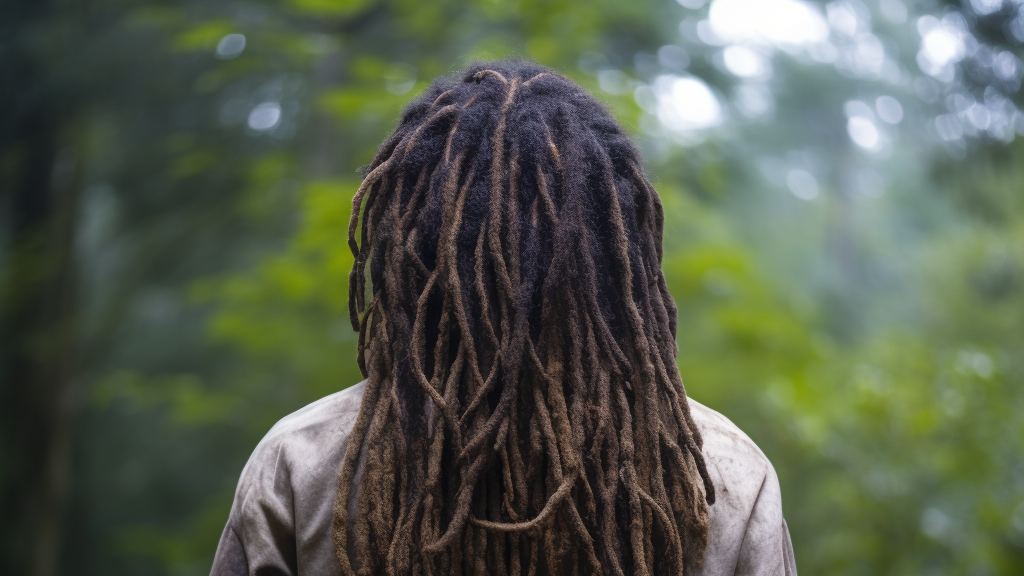
Where Did Dreadlocks Start? A Journey Through Time
"Dreadlocks, or 'locs', are not just a hairstyle but a tapestry of history across continents and cultures. Curious about their origins? Dive into a captivating journey through time.
Dreadlocks, also known simply as ‘locs’ or ‘dreads’, are much more than a mere hairstyle. They carry with them a vast history, spanning various continents, cultures, and centuries. If you've ever wondered, "Where did dreadlocks start?", you're about to embark on a fascinating journey through time.
Ancient Beginnings
1. Ancient Egypt: Many historians believe the journey of dreadlocks began in ancient Egypt. Mummies discovered with their hair still intact often sported dreadlock-like hairstyles. Moreover, various Egyptian artifacts, such as sculptures and hieroglyphics, depict figures adorned with locks.
2. Ancient India: The history of dreadlocks is also deeply rooted in ancient Indian traditions. For instance, in Hinduism, Lord Shiva, known as the destroyer and regenerator, is often depicted with matted hair resembling dreadlocks. Following this tradition, many Sadhus (Hindu ascetics) have worn dreads as a sign of their renunciation from worldly possessions and societal norms.
3. Ancient Greece: Interestingly, ancient Greeks were also among those who sported dreadlocks. Some historical texts and archeological discoveries suggest that Grecian warriors wore their hair in locks.
Africa’s Rich Tapestry of Dreadlock Traditions
Africa, with its myriad of cultures and tribes, has seen a diverse range of dreadlock styles and significances.
- Maasai Tribe: In countries like Kenya and Tanzania, the Maasai warriors are known for their distinct, red dreadlocks. They used red clay to color their locks, which set them apart.
- Ethiopian Clerics: Some believe that priests and clerics in ancient Ethiopia wore dreadlocks, drawing parallels with the biblical Nazarites.
Religious and Spiritual Symbolism
1. Rastafarianism: Perhaps the most globally recognized association with dreadlocks is the Rastafarian movement, which started in Jamaica in the 1930s. For Rastafarians, dreadlocks are more than just a hairstyle. They symbolize the Lion of Judah, a representation of their African roots, and a defiance against oppressive systems.
2. Biblical Connotations: The Bible, in the Old Testament, references the Nazirites who took vows that often included not cutting their hair, leading to naturally formed locks. The strength of Samson, one of the most famous Nazirites, was believed to be tied to his long hair.
Cultural and Global Evolution
As time progressed, the significance and popularity of dreadlocks evolved:
- Rebellion and Resistance: During the Civil Rights and Black Power movements in the 1960s and 70s in the United States, dreadlocks became emblematic of resistance against racial oppression. They also symbolized a reconnection with African heritage.
- Mainstreaming through Music: The global music scene, especially reggae with iconic figures like Bob Marley, catapulted dreadlocks into mainstream consciousness. For many, Bob Marley became synonymous with dreads, making them a popular choice among his fans worldwide.
- Modern Spiritual Movement: Beyond religious connotations, many today see the process of growing and maintaining dreadlocks as a spiritual journey, representing life's ebb, flow, and interconnectedness.
Debates and Discussions in Modern Times
Dreadlocks have been at the center of various debates, mainly revolving around cultural appropriation. As they've become more mainstream, individuals outside their traditional cultural contexts have adopted them, leading to discussions about respecting and understanding their origins.
However, on the flip side, there's a growing appreciation for the rich tapestry of history behind dreadlocks. From salons offering to style locks to a resurgence in natural hair movements, the beauty and significance of dreadlocks are being celebrated anew.
In Conclusion
The question, "Where did dreadlocks start?" doesn't have a singular answer. From ancient Egyptian mummies to Indian ascetics, Maasai warriors to Jamaican Rastafarians, the journey of dreadlocks is as intricate and intertwined as the locks themselves.
Today, whether worn as a sign of faith, a fashion statement, or a marker of cultural identity, it's imperative to understand and respect the profound history and significance of dreadlocks. Their roots run deep, and their story is a testament to the shared and diverse history of humankind.
Boost your impact! Share this post with family, friends, and co-workers using the social media icon below. They'll value your recommendation!


